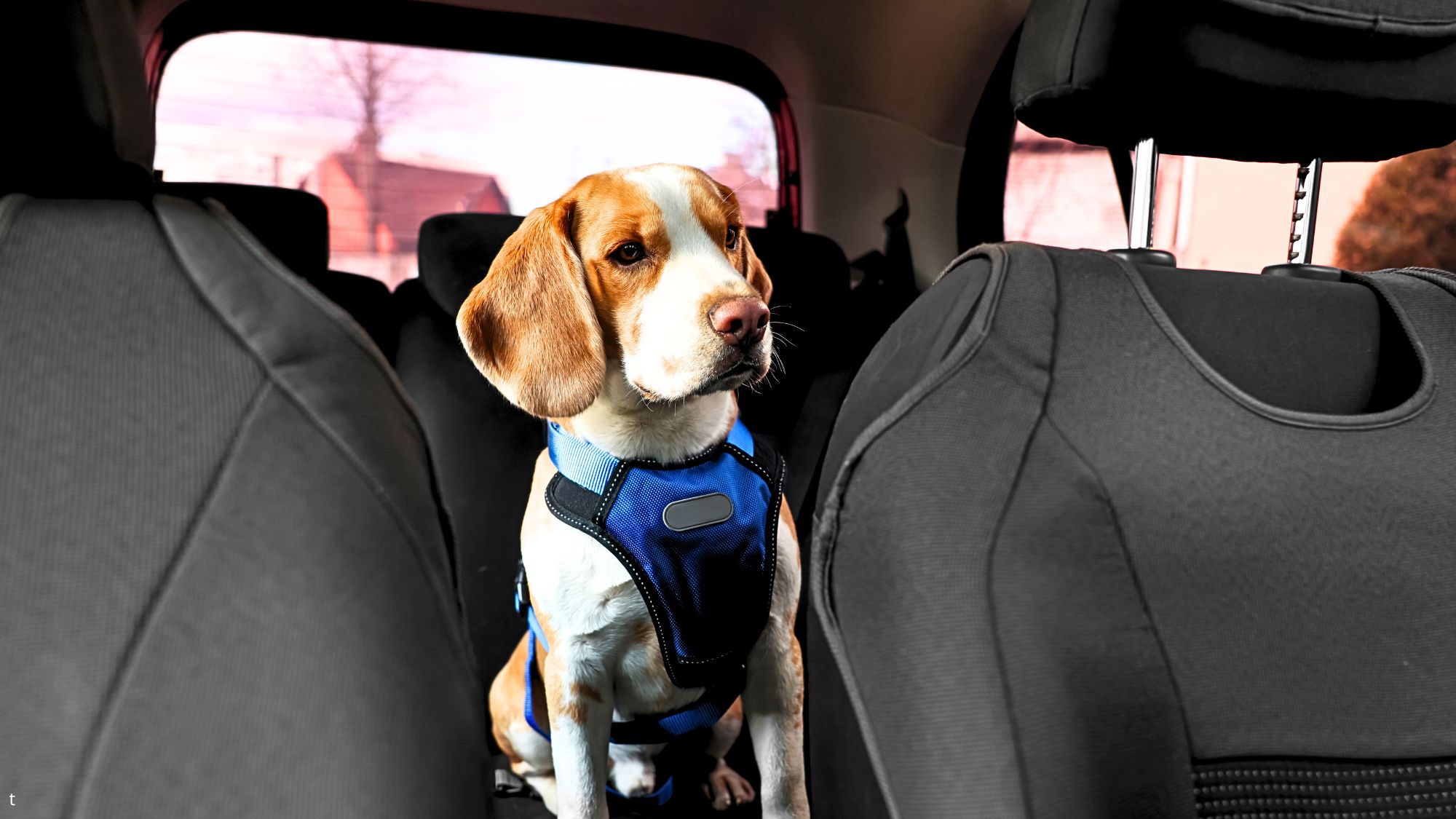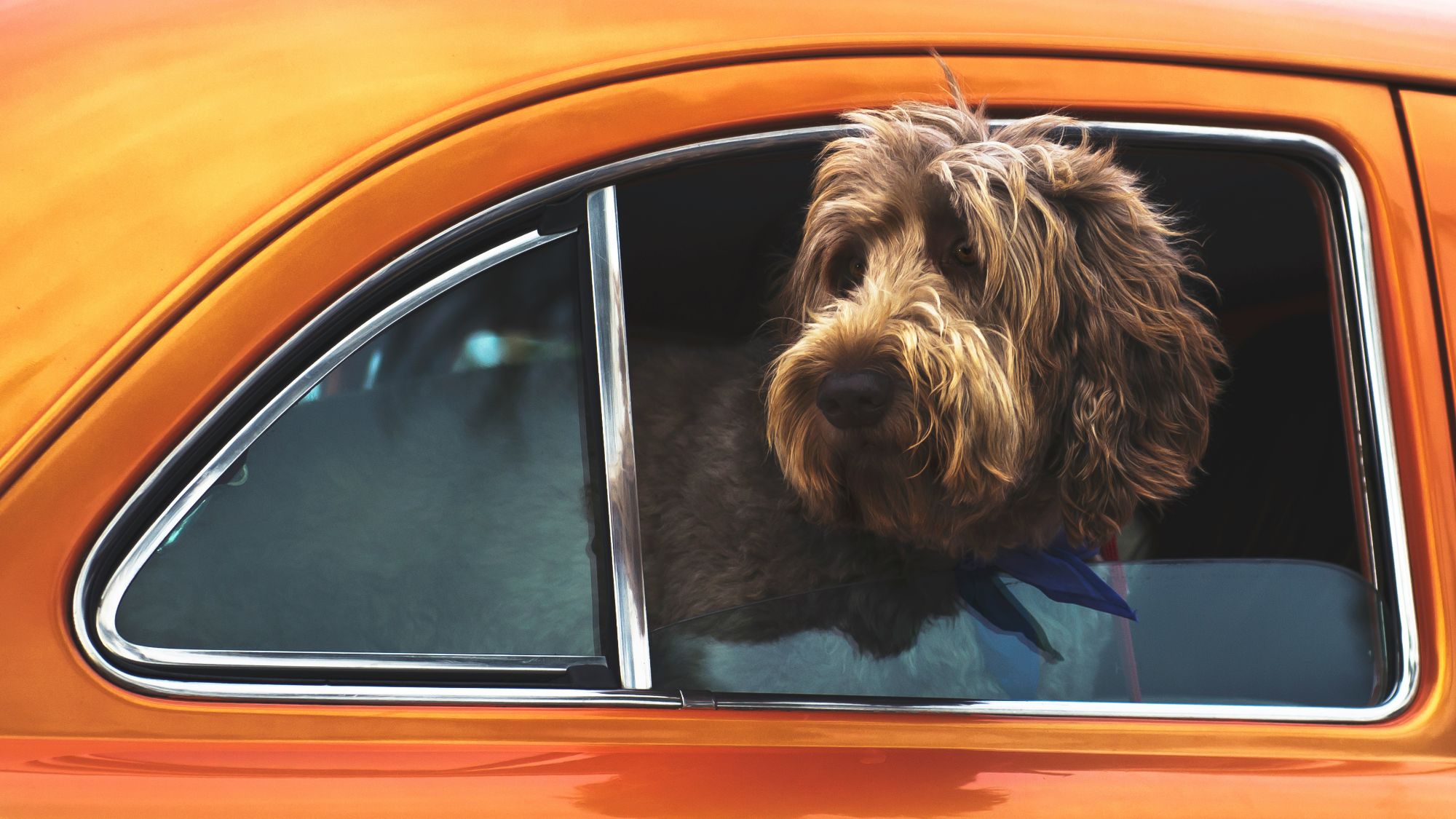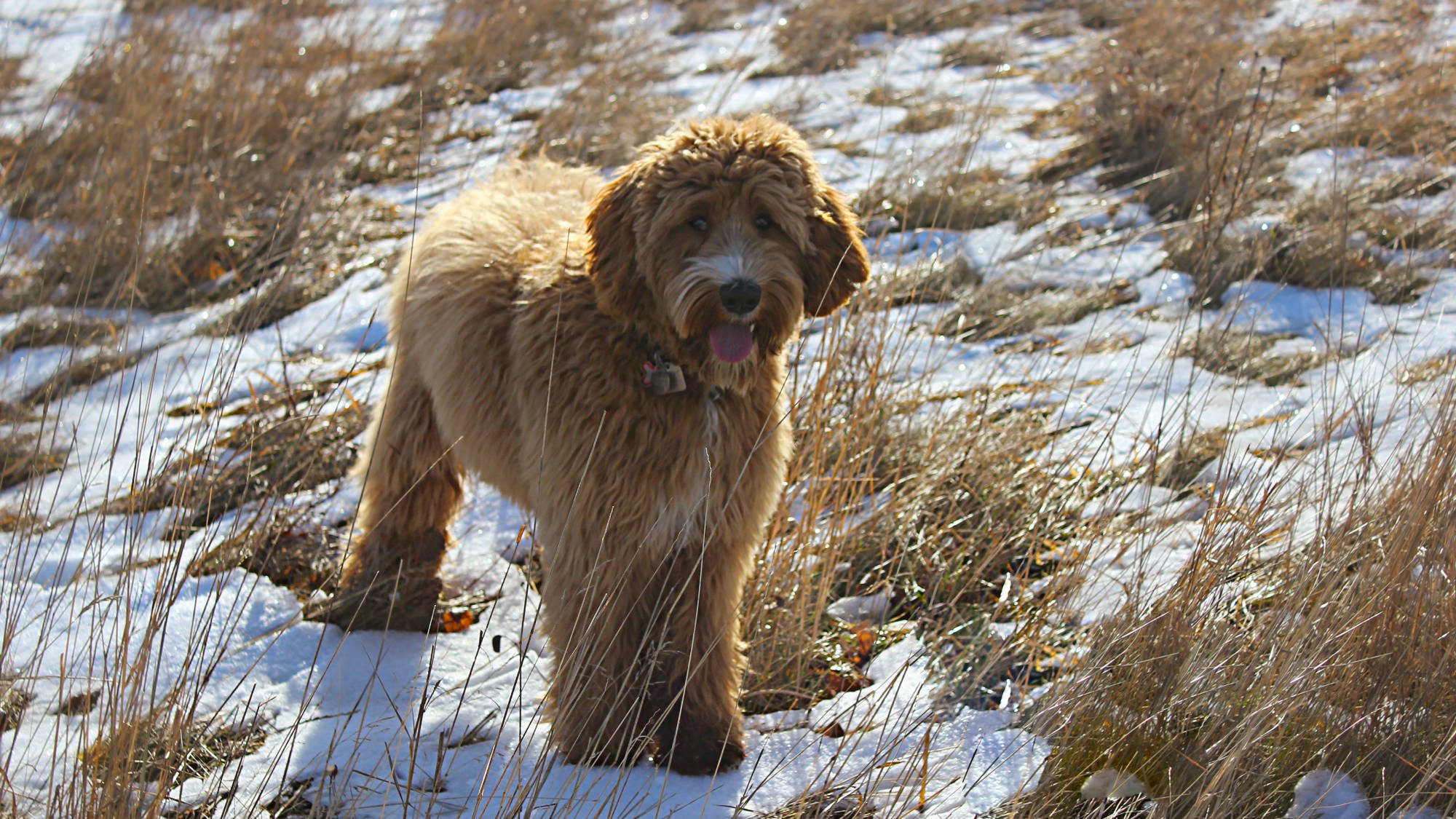When the weather outside is frightful, it’s not just time for Christmas Caroling. It’s time to consider the health and safety needs of your precious pooch! Snow, sleet, ice, wind — there’s a lot to prepare for when it comes to winter weather. Just like we’re affected by the cold, our dogs are, as well.
Table of Contents
- Recognizing the Cold’s Impact
- The Essentials of Winter Dog Care
- Managing Potty Breaksin Fridget Temps
- Special Considerations for Puppies and Senior Dogs
- Know the Signs of Hypothermia and Frostbite
- 4 Winter Safety Tips
- Embrace and Enjoy Winter Adventures Safely with Your Furry Friend
Recognizing the Cold’s Impact
Yes, your dog is wearing a fur suit, but that doesn’t mean they’re equipped to be spending long periods outside in frigid temperatures. We may think that our dogs flowing mane might ensure they’ll be warm and toasty through the winter months, but as gorgeous as those soft, plush coats are, they’re not a perfect insulator against the bitter cold Canadian winters.
Understanding the limitations of your dog’s natural protection against cold is crucial in preparing for winter. Just as winter thrill seekers can succumb to the conditions despite layering on the latest and most technologically advanced winter gear, your fluffy companion can be overwhelmed by excessive cold. Especially once your pooch’s coat becomes wet, then the fur loses much of its insulating ability.
For dogs with short hair, they have even less protection from the elements. All dog’s noses, ears, and feet are particularly vulnerable to harsh conditions.
The Essentials of Winter Dog Care
As the winter season approaches, it’s crucial to adapt your dog care routine to meet the challenges posed by colder temperatures and harsh weather conditions. Here are some key strategies to keep your furry friend safe and comfortable during the winter months.
Staying Warm and Protected
While a dog’s fur offers some insulation, it’s not foolproof. To safeguard your pet, consider additional warmth measures like coats, sweaters, and even booties to protect their paws from cold surfaces and de-icing chemicals.
Adorable but At-Risk — Supervising Your Dog in Their Cold Weather Gear
Yes, that Chilly Dogs, Canadian Made full body sweater with hood is ADORBS on your Woofie, but you cannot just throw a sweater or coat on your dog and send them outside to brave the conditions without proper supervision.
Your pooch is still at risk for frostbite and other health conditions and must be monitored. Those cute clothes can pose a health risk all on their own. The clothing could become wet, making your dog more at risk for hypothermia. They may try to get out of their clothes, despite how cute they look in them, in such a way that poses a choking hazard or suffocation risk. Keeping an eye on your sweater-wearing friend is essential.
Foot Care and Protection
While you’re on supervision duty, be mindful of your pooch’s foot pads. Snow and ice can quickly accumulate between your dog’s pads, leading to discomfort or even frostbite. Regularly trimming the hair between their pads can prevent ice ball formation.
De-icing products that aren’t pet-friendly can cause serious illness to your pooch, not only by possibly burning their foot pad but also a danger to your pet if they later lick that material off their thawing feet.
It’s a good idea to go with protective booties for your dog. I know — our Woofies are not always accepting of booties. Try slipping your pup’s feet into baby socks first. Let them wear the socks around the house in order to get them used to the sensation of something on their feet.
Once they’ve adapted to having something on their feet, they’ll be ready for the real thing. Be sure to fit booties snugly but not overly tight. If they’re too tight, you risk limiting circulation, which makes frostbite more likely to occur.
Managing Potty Breaksin Fridget Temps
Who wants to go outside when the wind is whipping ice crystals in your face, and the air is so cold, it’s hard to breathe? But our dogs still need to go out for potty time, no matter the weather.
How can you encourage your Woofie to head out into the plummeting temps in the dark of winter? Here are a few tips.
1. Shovel a Path
Shovel a small area in your yard or dog run and keep it clear — or at least keep the snow to a minimum. Encourage your pet to use this area for his business. If your pooch is particularly resistant, don’t be afraid to get out the treats, and it may even mean that you need to bundle up and accompany your buddy into the frozen landscape.
2. Buy Booties
If your dog is bothered by the snow and ice touching its feet, slipping your pooch into his snow boots may make the process more acceptable. BONUS! Pet booties will also help keep your house cleaner.
3. Keep Close to the Door
When it’s really nasty out there, we recommend staying by the door while your Woolfie visits their outdoor area. Then, allow him back in as soon as he comes back to the door. Believe me, when it’s that bad outside, he’ll be watching to make sure you’re there, prepared to open the door!
Special Considerations for Puppies and Senior Dogs
Sweaters, coats, diamond-studded booties, light-up collars, and harnesses — all fun and great for helping your pooch beat the cold temps, BUT all of these are geared toward healthy adult dogs!
Puppies and senior dogs can NOT be left outdoors, no matter how well-dressed! The reason is they just don’t have the metabolism, fat stores, or the full fur coat they require to stay safe when winter temperatures plummet.
When it’s below zero, and the wind is whipping, or it’s wet outside, keep the young and old or sick dogs inside!
Know the Signs of Hypothermia and Frostbite
Just like us, our canine friends need shelter, warmth, food, and care. When winter’s chill sends you scurrying indoors, don’t forget your furry, four-footed pals and their needs.
When dogs are exposed to the cold for too long, their body temperature — which is typically between 101°F and 102.5°F — can drop fatally. Here’s what you need to know to protect and care for your Woofie during winter.
Hypothermia Symptoms
Violent shivering, followed by listlessness, weak pulse, lethargy, muscle stiffness, problems breathing, lack of appetite, rectal temperature below 98°F and coma/cardiac arrest
Hypothermia Treatment
The best way to manage hypothermia is to avoid it. If your dog does get hypothermia, wrap them in a warm, dry blanket or coat (try warming blankets in the dryer for a few minutes).
Bring your dog to a warm area. Give him a solution of four teaspoons of honey or sugar dissolved in warm water to drink. You can also put 1-2 teaspoons of corn syrup on the gums if your pet is too weak to drink. This provides an immediate energy boost.
Place warm, towel-wrapped water bottles against your pet’s abdomen or at his under arms and chest, then wrap him in a blanket.
Do not use hair dryers, heating pads, or electric blankets to warm up a hypothermic pet — this may result in burns or cause surface blood vessels to dilate, which compromises circulation to vital organs.
Call your veterinarian immediately.
Frostbite Signs in Dogs
Frostbite happens when a part of your dog’s body freezes. This may include tails, ears, foot pads, testicles, or scrotum. Severe winter weather, especially when windy or humid, can lead to frostbite.
Watch for pale, gray, or blue skin, at first red, puffy skin and later pain in ears, tail, or paws when touched, skin that stays cold or shriveled skin
Frostbite Treatment
Apply warm (not hot) water for at least 20 minutes to the frostbitten area. Do not use hair dryers, heating pads, or electric blankets to warm up a frostbitten pet, which can cause burns. Handle the affected areas very carefully. Don’t rub or massage them. It’s possible that you could cause permanent damage.
Call your vet immediately.
4 Winter Safety Tips
As winter sets in, most of the time, your pooch will just be taking a quick spin around the backyard, do his business, bark at the passerby, and zip back inside with you for cuddles by the fire. However, the season also brings with it unique challenges, including colder weather, shorter daylight hours, and festive celebrations, all of which pose specific risks to our pets. To keep your furry friend safe and healthy during these colder months, here are three winter safety tips to guard against common hazards of the season.
1. Safely Store Antifreeze
Antifreeze can be deadly to a dog if the dog isn’t treated immediately and aggressively. It doesn’t take much to kill a dog. Antifreeze is thick, very sweet, and can be irresistible to some pets. Vets see many toxicity cases every winter, and if it’s not from the Christmas Chocolate.
Vigilance is necessary to prevent accidental ingestion. Be sure all antifreeze containers are tightly closed and put away on a high shelf. Make certain your car is not leaking antifreeze.
2. Make Sure Your Dog is Visible
During those dark winter evenings and early mornings, your pooch can be hard to see. When it is time for a winter walk, consider a reflective collar, coat, or booties. You can even get blinking LED lights to adorn your pooch’s wardrobe.
3. Guard Against Holiday Hazards
Holidays in winter bring family and friends together for fun and frivolity, but they also carry extra risk to your fur friend. Chocolate and Sugar, especially sugar substitutes (xylitol is particularly deadly to your 4-legged friend), bring increased danger. Take every caution to keep pets away from chocolate, plants, holly berries, leaves, and tinsel.
Call Animal Poison Control Center at 1-800-213-6680 or your vet IMMEDIATELY if you think your pet has eaten something dangerous.
4. Avoid Thin Ice
All too often, we hear of dogs needing to be rescued from icy waters — and those are the lucky ones! Though it might look like fun to slide across that frozen pond, the ice can easily crack, and you and your dog could fall in. Slipping on ice can also lead to muscle strains and other injuries. Keep yourself and your dog safe — avoid thin ice!
Embrace and Enjoy Winter Adventures Safely with Your Furry Friend
As winter wraps its chilly embrace around us, it’s crucial to remain vigilant about our furry friends’ well-being. The right care and precautions can make all the difference in shielding our beloved pets from winter’s harsh elements, allowing for joyous moments together, regardless of the weather outside.








